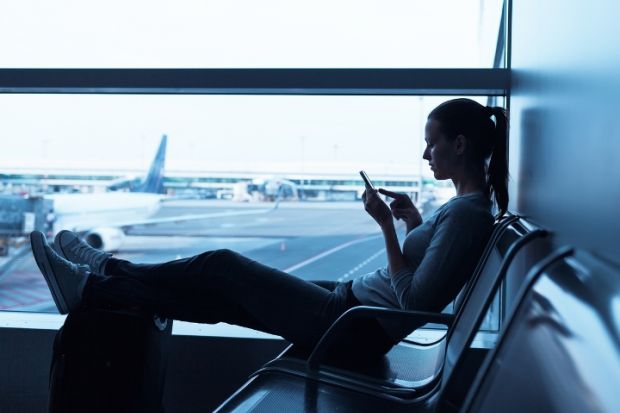US universities, blamed for fuelling Covid outbreaks in their communities at the start of the autumn semester, are now nearing the winter break with unclear plans to avoid students seeding new outbreaks back home.
An initial survey by the College Crisis Initiative, a Davidson College project that tracks academia’s response to the pandemic, found little evidence of specific plans for end-of-semester coronavirus testing.
The initiative checked in mid-October with a random selection of 50 four-year colleges of various sizes and found only one, Vanderbilt University, that had any plan for testing students before they leave.
That may suggest new risks for US communities just as the nation is going through a new round of breaking daily records for new Covid infections, said Christopher Marsicano, an assistant professor of higher education at Davidson who heads the College Crisis Initiative.
“Needless to say, the complete and utter lack of demonstrated plans is bleak,” Dr Marsicano said.
A study earlier in the autumn semester by experts at Davidson and several other institutions estimated that the reopening of US colleges boosted nationwide infection rates in their surrounding communities by about 3,200 cases per day for at least two weeks.
A New York Times tracking project has counted more than 200,000 cases at colleges since this summer, and dozens of campuses and programmes have retreated from in-person activities as a result.
One survey by the American Council on Education, the main US higher education association, estimated that only about a third of US colleges and universities were subjecting their students to ongoing Covid testing, with affordability and access posing major barriers.
Vanderbilt has a medical school, and the idea for mandatory exit testing drew from consultations with experts there, said Eric Kopstain, the university’s vice-chancellor for administration.
Many more institutions need to do so, said Juliana Terheyden of Testing For America, a non-profit coalition of academics and other experts working to help colleges safely operate during the pandemic. “This is extremely important,” she said.
Whether to make that exit testing mandatory is a tougher question, said Christopher Longhurst, a clinical professor of medicine at the University of California, San Diego, who helped devise his campus’ system for testing its students every 14 days.
Infection outbreaks tied to college students across the US have largely involved off-campus violations of safety guidelines in places such as restaurants, bars and residences. There is little to no evidence across the country of disease spread tied to classrooms and other officially monitored locations, Professor Longhurst said.
Yet compulsion does not seem a motivating factor for students to get tested, at least at institutions that can afford to offer regular screening, campus officials said.
The State University of New York system plans to test about 140,000 students at its 64 colleges over 10 days prior to the Thanksgiving holiday break in late November. Violators are subject to potential suspension or even permanent dismissal. But SUNY already has been testing its students regularly, and has seen no problem with cooperation, a SUNY spokeswoman said.
“The vast majority of students have been complying,” the spokeswoman said. “Students want to protect their families.”
Still, Dr Marsicano said, the lack of mandatory exit testing across US higher education was an important indicator. That is because it probably reflects the persistently low institutional capacity to test large groups of young people who can carry the virus home without showing it.
“I understand that tests are expensive,” he said. “But spending that money on broad-scale asymptomatic testing two weeks before releasing students to go home is a really good use of limited resources.”
That’s especially true for students headed home to rural counties that now appear especially hard-hit by the pandemic, Dr Marsicano said.
San Diego, Professor Longhurst said, was encouraging any of its students who leave campus for the Thanksgiving holiday to remain away for the rest of the semester. Campuses without testing capacity, Dr Marsicano said, should consider offering only online classes for the final two weeks before Thanksgiving.
“At least it would be something,” he said.
Register to continue
Why register?
- Registration is free and only takes a moment
- Once registered, you can read 3 articles a month
- Sign up for our newsletter
Subscribe
Or subscribe for unlimited access to:
- Unlimited access to news, views, insights & reviews
- Digital editions
- Digital access to THE’s university and college rankings analysis
Already registered or a current subscriber? Login








